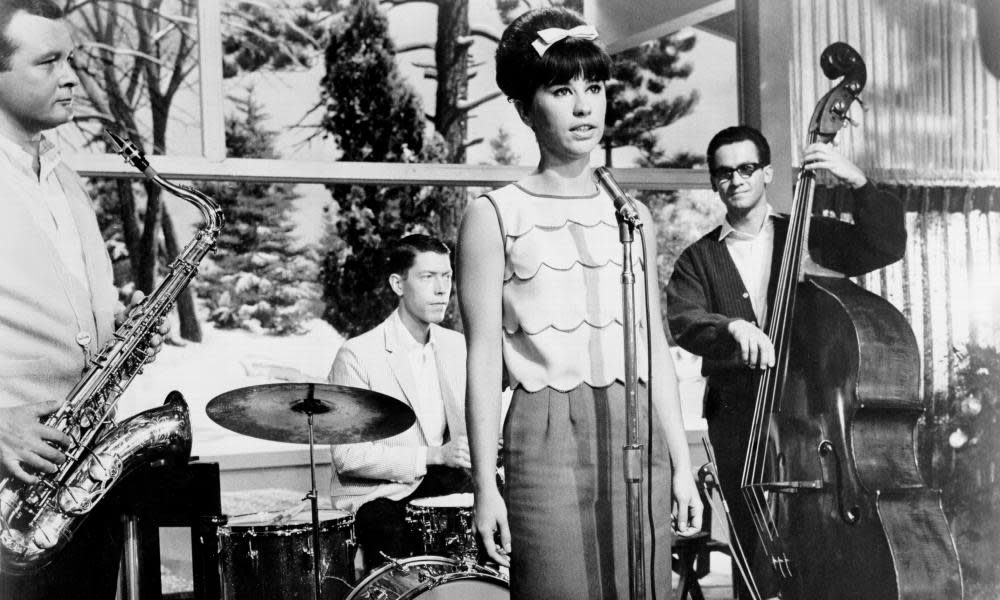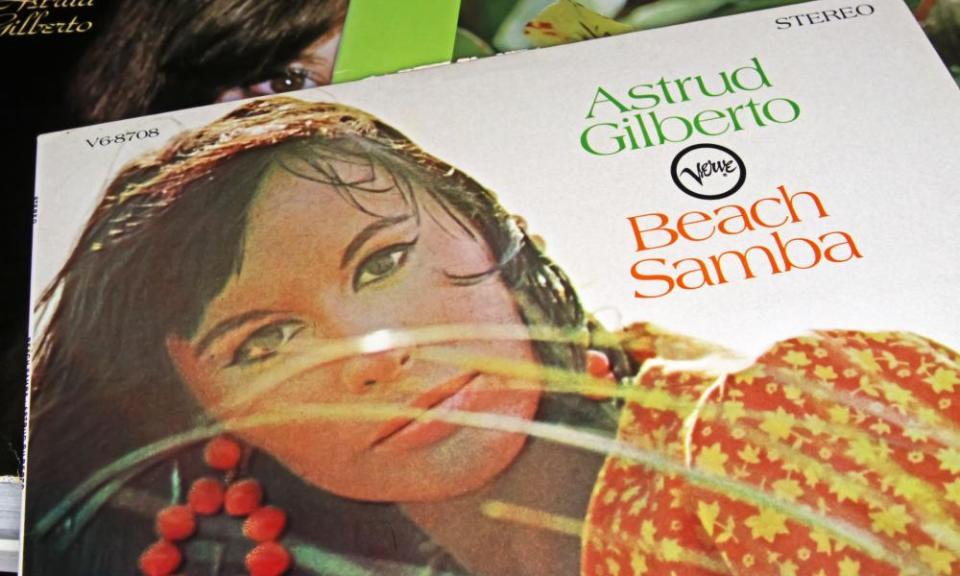Astrud Gilberto obituary

Astrud Gilberto, who has died aged 83, became the best known female bossa nova singer, thanks to her cool, breathy and delightful treatment of The Girl from Ipanema, a song that sold more than a million copies when it was released as a single in 1964, and introduced the laid-back, sophisticated Brazilian musical style to a vast new audience across the US and the rest of the world.
Gilberto did not write the song, and had not previously been rated as a key figure in the bossa nova movement, as she had never sung professionally before. But that one hit record changed everything. She became the impossibly cool voice, and face, of what would become a new global pop music fashion.
The song was taken from the album Getz/Gilberto, a collaboration set featuring the American saxophonist Stan Getz, who had become fascinated by bossa nova, and the Brazilian guitarist João Gilberto, to whom Astrud was then married. She performed only two songs on the album (the second was Corcovado) but The Girl from Ipanema guaranteed that she would become as well known as the album’s two official stars. The song also transformed her husband’s career, but they never enjoyed its success together as their marriage broke up later the same year. Astrud went on to develop her own career, and continued to work with Getz.
Born Astrud Evangelina Weinert in Salvador, in the Brazilian state of Bahia, she was the daughter of a Brazilian mother and German father. He taught languages and literature, and decided to name his three daughters after goddesses of German mythology – Astrud, Eda and Iduna. When Astrud was eight the family moved to an ocean-front home in Rio de Janeiro, where she studied at the Colégio de Aplicação.
As a teenager in the late 1950s, she became friends with the singer Nara Leão, and through her she met the other emerging stars of Rio’s new bossa nova music scene, including the extraordinary guitarist João Gilberto. Also born in Bahia state, he had moved back to Rio after an uneasy career in which he had been fired from a band because he could never be trusted to turn up for rehearsals, and had then spent months living with an elder sister, practising and perfecting a new style of romantic and reflective music.
Bossa nova mixed Brazilian samba rhythms with influences from the American “cool jazz” scene, and featured an understated vocal style matched against an acoustic guitar technique that combined plucked chords with jazz-influenced harmonies and chord progressions.

João Gilberto’s work impressed the composer Antônio Carlos “Tom” Jobim, who began writing songs in the new style, helped by the lyricist Vinicius de Moraes. The first bossa hit, Chega de Saudade, in 1958, was followed by a full album with the same title the following year. Bossa nova shook up the Brazilian music scene, and João was the star performer. In 1960, when Astrud was 20, she and João were married.
The newlyweds did not stay in Rio for long. American jazz musicians including Charlie Byrd visited Brazil as part of President John F Kennedy’s Good Neighbour programme, and were excited by the new music that they heard. Back in the US, Byrd recorded the album Jazz Samba with Getz, another convert to the new style, and it became a massive success. It was now inevitable that João Gilberto would be invited to the US to perform, and in November 1962 he appeared in New York at a famous concert that also included both leading Brazilian bossa nova musicians including Jobim and Sérgio Mendes and the American jazz stars Byrd and Getz.
João and Astrud stayed on in New York, and in 1963 he recorded his collaboration album with Getz, with help from the producer Creed Taylor. One of the songs they wanted to include was Garota de Ipanema (The Girl from Ipanema), a song that had been written by Jobim with lyrics (in Portuguese) by Moraes, as they sat in a bar off Copacabana beach in Rio, watching the girls go by.
There is controversy as to how Astrud came to sing The Girl from Ipanema on the album. There have been suggestions that Taylor suggested that English lyrics should be included, and that Astrud offered to sing them, because she spoke English, despite the initial protests of her husband.
For her part, she always insisted that she sang on the album at his suggestion, and that he admired her voice. What is not in dispute is the commercial success of the decision. When the song was released as a single, in a shortened version to encourage radio play, it became a massive hit, reaching the top 5 in the US charts and No 29 in the UK. It also helped to further boost sales of the Getz/Gilberto album on which it had first appeared; at the time, it was credited as the bestselling jazz LP in history. The song would later be covered by singers from Frank Sinatra to Amy Winehouse.
Astrud’s relationship with João was now at an end (they divorced in the mid-60s), but her career was just beginning. She toured with Getz and appeared on his 1964 live album Getz Au Go Go, covering both bossa and American standards, and in 1965 she released her own first solo set, The Astrud Gilberto Album, which included songs in both English and Portuguese.
The following year she released two more albums, including Look to the Rainbow, on which she worked with Gil Evans. In 1964 she appeared in two films, The Hanged Man and Get Yourself a College Girl, and in 1966 she worked with Quincy Jones on the soundtrack to the Sidney Lumet spy thriller The Deadly Affair. For many years she was the voice of Eastern Airlines, and appeared in their TV commercials.

She never enjoyed massive success as a soloist, but was a prolific artist and continued to collaborate with other major musicians. She began writing her own songs in the 70s, and her 1977 album, That Girl from Ipanema, included a duet with the jazz trumpeter Chet Baker on one of her songs, Far Away.
In the early 80s she formed a band that included her son Marcelo playing bass, and in 1987 she recorded an album with the James Last Orchestra that included several of her own new songs, including Champagne & Caviar. In 1996 she contributed to the Aids benefit album Red Hot + Rio, singing the bossa classic Desafinado with George Michael.
In 2002 she was inducted into the Latin Music Hall of Fame, and released what would be her final album, Jungle, which featured 10 of her original new songs. She also announced she was taking “indefinite time off” from public performances. She now devoted much of her time to animal rights projects and her work as an artist. In 2008 she was awarded a lifetime achievement Grammy by the Latin Recording Academy.
She is survived by Marcelo, her son with João Gilberto, and her son Gregory, from another relationship.
• Astrud Gilberto (Astrud Evangelina Weinert), singer and songwriter, born 29 March 1940; died 5 June 2023

 Yahoo News
Yahoo News 
